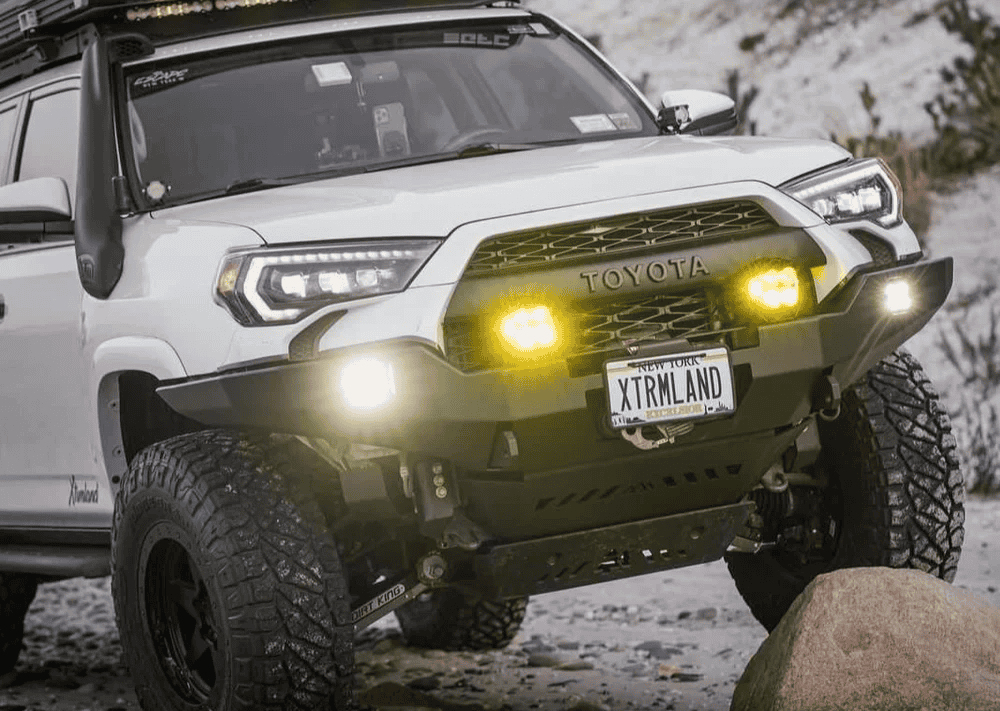Overland Vehicles

A custom vehicle upfit service adapts a platform for a defined mission, whether that is field work, family travel, or remote exploration. The process blends mechanical, electrical, and interior work into a cohesive package that performs under load and in real conditions. The scope can be light, like a storage system and auxiliary lighting, or comprehensive, including power systems, suspension tuning, and interior buildouts. The goal is function, safety, and reliability that feels factory integrated.
Common components include:
Good upfits protect OEM systems and respect sensor locations, airbag zones, heat pathways, and service access. Every fastener, harness, and panel should be chosen for the environment and the loads it will see over time.
Clear planning reduces cost and keeps the vehicle in service. Start with use cases, duty cycle, season, terrain, and crew size. Map payload by listing gear, fluids, and accessories, then add people and fuel to estimate real operating weight. Identify the rated payload and gross axle weight ratings to avoid overloading. Note where heavy items will sit to keep the center of gravity low and balanced.
Payload is not just a total number. Front and rear axle ratings matter, and left to right balance affects handling and braking. Corner weighing after installation verifies assumptions and guides spring and shock selection. Heavy components belong low and between axles whenever possible. Roof loads should be minimized to reduce sway and wind sensitivity.
Power design starts with loads. Tally devices, their draw, and estimated daily use to size battery capacity. Modern builds often use lithium iron phosphate for weight savings and depth of discharge. A DC to DC charger from the alternator, protected with proper fusing and cabling, keeps the system healthy. Solar supplements, it rarely replaces, engine or shore charging in real weather. Inverters should be right sized and placed near batteries, with short, protected cables and clear ventilation.
An upfit should not compromise crash structure, airbag performance, or advanced driver assistance sensors. Fasteners need backing plates where required, and cuts must be sealed against corrosion. Electrical protection is non negotiable: every positive run must be fused close to the source, and harnesses must be abrasion protected and secured. Documentation helps preserve manufacturer warranty and simplifies future service.
Quality is visible in the details. Look for straight, deburred cuts, gasketed penetrations, and hardware that matches the environment. Wire looms should be supported, labeled, and serviceable. Mounts should spread loads, not point load thin sheet metal. Interior panels should fit quietly without rattles, and the vehicle should remain easy to maintain with access to filters, service ports, and diagnostics.
Corrosion resistant fasteners, proper rivnuts, and thread treatment keep assemblies tight. Marine grade tinned copper wire, heat shrink terminations, and abrasion resistant loom extend life in moisture and dust. For structures, aluminum and stainless have specific roles; mixing dissimilar metals calls for isolation to avoid galvanic issues. Adhesives and sealants need correct prep and cure times to perform.
A professional upfit ends with verification. Expect torque checks on suspension hardware, continuity and polarity tests, charger and inverter function checks, parasitic draw measurement, and thermal checks under load. A road test validates alignment, noise levels, and any electronic recalibration needed after changes. You should receive diagrams, manuals, and a walkthrough that covers operation, maintenance, and safe limits.
Cost depends on scope, materials, and labor time. Timelines vary with parts availability and the complexity of fabrication. Clear change control and staged approvals keep projects on track. After delivery, plan a shakedown period to note adjustments, then schedule a follow up to refine damping, pressures, and any fitment tweaks. Ownership includes periodic inspections of fasteners, seals, and electrical connections.
When the plan calls for a capable travel or work platform, an experienced builder delivers a cohesive package rather than a pile of bolt ons. If remote travel is on your roadmap, explore our approach to overland rigs and how each system is selected to work together. For deep dive integration, review our process for a custom overland upfit, from discovery to final testing. To understand how we think about builds, materials, and support, see why choose OZK Customs.
We design and build complete upfits that respect factory engineering, integrate power and suspension correctly, and arrive with clean documentation. Based in Fayetteville, Arkansas, our team handles full custom builds and partial upfits for travel and field operations. Tell us what your vehicle needs to do, and we will map a clear scope, timeline, and budget that avoids rework and keeps you moving.
Ready for a purpose built upfit that is engineered, documented, and test proven? Tell us how you travel or work, and our team will map a build plan, timeline, and budget that fits. Submit the form to start your spec review and get a clear proposal from OZK Customs.
ADDRESS:
6159 E Huntsville Rd, Fayetteville, AR 72701
PHONE:
(479) 326-9200
EMAIL:
info@ozkvans.com